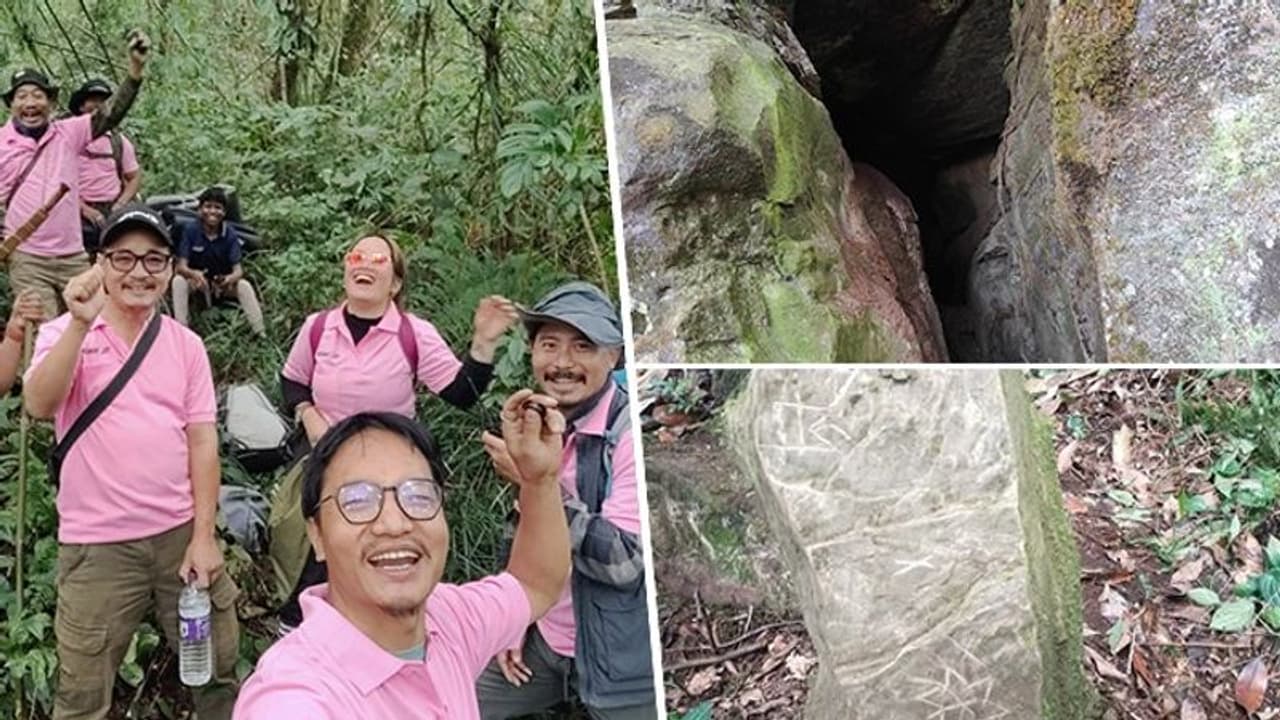Trekkers led by Everester Tagit Sorang uncover a forgotten WWII transit camp near the Arunachal-Myanmar border, revealing a strategic Allied Forces site that played a crucial role in resisting the Japanese army's advance.
In a fascinating exploration, a group of trekkers led by an experienced Everester, Tagit Sorang, has uncovered a stone cave near the Arunachal-Myanmar border, believed to be a transit camp used by Allied Forces during World War II. The discovery sheds light on a forgotten chapter of history, revealing the strategic role played by the site in stalling the advance of the Japanese army.

Tagit Sorang's team, comprising 27 trekkers, stumbled upon the cave at the 2,119-meter-high "Longpongka" point in Arunachal Pradesh's Tirap district during their expedition on Friday. The trekkers, driven by the spirit of adventure and exploration, meticulously documented their findings, capturing photographic evidence and other details about the historical site the following day.
Local residents have identified circular symbols, English abbreviations, and numerical markings carved by soldiers alongside the cave as significant indicators of the transit camp. According to historical accounts shared by locals, the Allied Forces strategically utilized this point to resist the Japanese army's advancement from Burma (now Myanmar) into the vast expanse of the North-East Frontier Agency, which is present-day Arunachal Pradesh.
The hilltop, known locally as 'Silombhu,' served as a crucial location for stockpiling ration and equipment dispatched from Assam during World War II. The site, however, remained unrecognized by the outside world, abandoned after the war, and concealed from historical records.
Khunwang Khusia, a retired forester and native of Thinsa village, who was part of the trekking team, shared insights into the significance of the discovery. "We call this hilltop 'Silombhu' in our local language. Allied Forces used this hilltop to stock ration and equipment sent from Assam," he told TOI.
The trek, organized by the district tourism office and locals of Thinsa village as part of an anti-drug campaign, unveiled a hidden piece of history. The locals believe that the giant rocks of the cave offered a secure shelter, as enemy bullets could not penetrate them.
The strategic role of the site becomes more apparent as historical details emerge. District tourism officer (Tirap) Rigio Tabam highlighted that able-bodied males, primarily from the Tutsa and Nocte tribes, carried ration, arms, and ammunition from Dilighat in Assam to Longpongka and further to the Myanmar border. This logistical feat played a crucial role in preventing Japanese soldiers from opening a new front from Myanmar towards the North-East Frontier Agency.
The trek, covering 7 kilometers from Thinsa village, presented challenges through high hills, dense foliage, and imposing rock formations. The trekkers, navigating uncharted territory, discovered a tangible link to a forgotten era, offering a glimpse into the resilience and strategic brilliance of those who shaped the region's history during World War II.
The rediscovery of this WWII transit camp adds a new layer to the historical narrative of the region, reminding us of the untold stories embedded in the landscapes we traverse today. The trekkers' exploration not only connects us with the past but also emphasizes the need to preserve and commemorate such significant sites for future generations.
